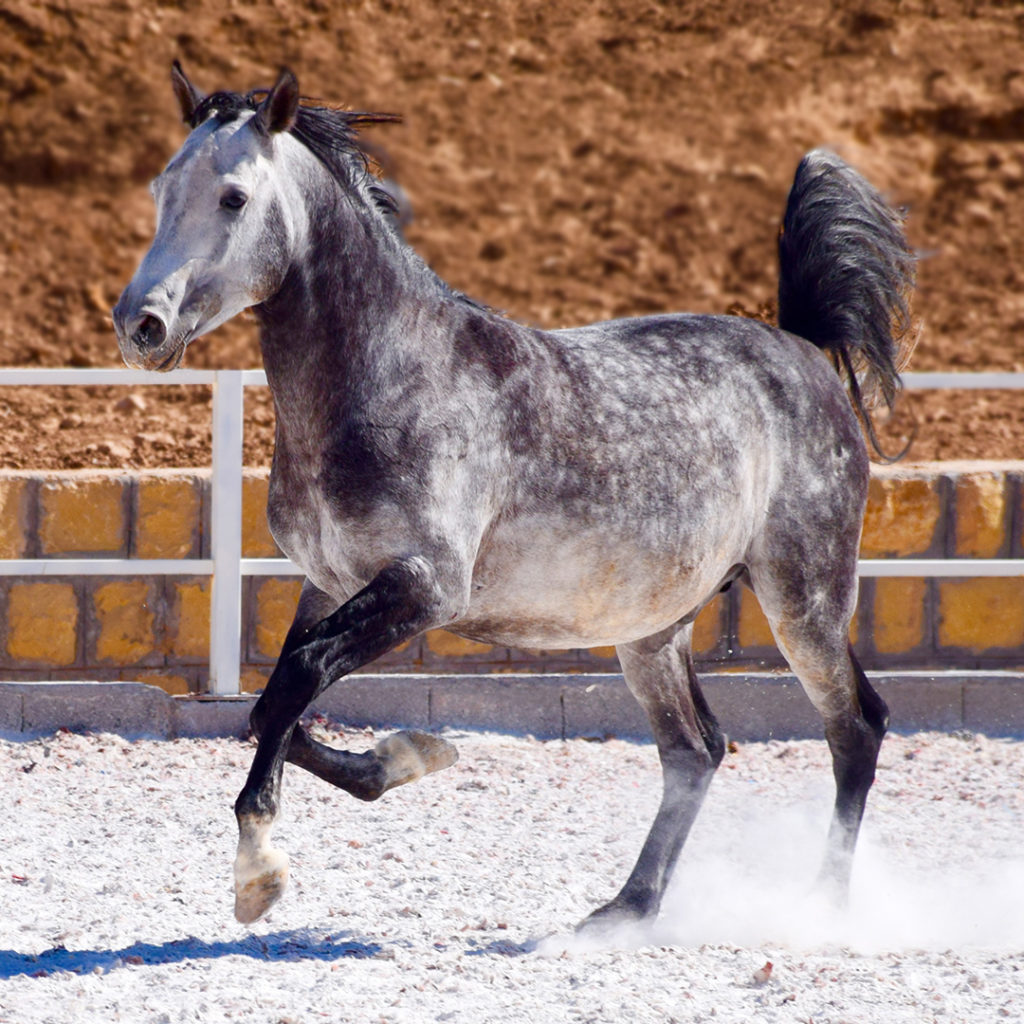

The Dareshuri Horse (Persian: اسب دره شوری) is one of the major horse breeds of Iran originating in the central and southern regions of the Zagros mountain range.
The official name of the horse is derived from the popularity given to it and active breeding by the tribal chiefs of the Dareshuri tribe of the Qashqai tribal confederation. [1]
In one conclusive look, the Dareshuri is a horse with a tall build (especially compared with other local breeds) of around 150-160 centimeters (15-16 hands) from withers to ground, a balanced and muscular body, and very strong and resistant skeletal structure. William Douglas writes:
“when hunting and on stony ground sometimes a horse would fall but almost never get injured.”
From the side, the body shape is not as compact as the Kurd horse and not as elongated as the Turkmen. The proportions and congruence of the body of this breed, with its high-held neck and tail, makes for a splendid sight.

Amir Amanollah Setorg Dareshuri in the documentary “Daghe Do” (Brand Two) produced by Nabi Bahadori describes the Dareshuri Horse’s apparent characteristics as follows:
“This horse has long ears that resemble a curved dagger and a well rounded jaw and cheek. A bony, flat, and wide forehead with large eyes. Above the eyes are noticeably wrinkled eyebrows. It has large round nostrils and strong lip muscles; usually with a lower lip slightly smaller than the upper.
The neck of the Dareshuri horse has a one of a kind curvature that is known as a sword neck. The connection point between the head and neck right beneath the throat is fine and delicate and without wrinkling of the skin, and the connection between the head and neck is very strong.
The horse has a wide chest and the forearms have good separation from each other at the point they connect to the chest. The cannons and hooves of these horses are not as delicate as the Arabian’s and not as rough and large as the Kurd’s. The pasterns are usually not long either. The length and situation of the gaskin is very important in the Dareshuri Horse’s hind legs and greatly affects the horses ability to move.
The hindquarter and hips of the Dareshuri Horse looks even from the side with an angled break in its curve right beneath the dock, while being full and muscular from the rear. This horse breed keeps its head and tail high up while on the move.